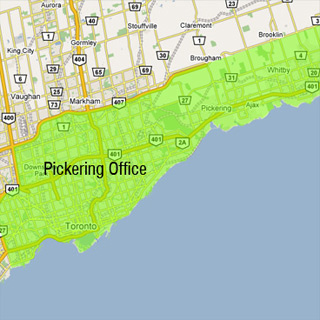Suppliers of cool air
blowers, high volume air ventilators, air blower motors, pneumatic
blowers,Canada Blower compressed air blowers, suction pressure
blowers, air blower
compressores, high pressure axial fans, propeller fans, axial prop
fans, industrial fan motors, big industrial fans, large industrial
ventilators, industrial blower systems, explosion proof ventilation
fans, rooftop fans and ventilators, shop fans, building ventilation
fans. Industrial process ventilation
fans and utility blowers, OEM blower / fan wheel blades, compact
packaged
backward inlined and radial blowers and fan ventilators. Quick ship of
centrifugal and axial aluminum and steel centrifugal pressure blowers
and tubeaxial / vaneaxial fan ventilators.
|
|
|
|
|
Examples of Canada Blower centrifugal fans
for marine, shipping and offshore use:
Inert Gas Fans
Flue Gas Desulfurization Fans (FGD)
Flue Gas Recirculation Fans
FPSO Combustion Fans (FD & ID fans)
Gas Ventilation Fans
Primary and Secondary Air Fans
Combustion Fans
Seal air fans
Soot blower
Scrubber fans |
| |
|
Canada Blower
fan
blower
ventilator
industrial
fan
industrial
blower
industrial
ventilator
centrifugal
fan
centrifugal
blower
centrifugal
ventilator
axial fan
axial
blower
axial
ventilator
radial fan
radial
blower
pressure
blower
pressure
fan
combustion
blower
pneumatic
blower
dust
collector fan
dust
collecting fan
dust
collection fan
vacuum
blower
vacuum fan
propeller
fan
propeller
ventilator
high
temperature fan
high
temperature blower
high
temperature ventilator
stainless
steel fan
stainless
steel blower
stainless
steel ventilator
roof fan
wall fan
roof
ventilator
wall
ventilator
exhaust
fan
exhaust
blower
exhaust
ventilator
supply fan
supply
blower
supply
ventilator
wall
exhaust fan
wall
exhaust ventilator
roof
exhaust fan
roof
exhaust ventilator
wall
supply fan
wall
supply ventilator
roof
supply fan
roof
supply ventilator
airhandling
fan
air
handling fan
air fan
air blower
plastic
fan
plastic
blower
plastic
ventilator
PVC fan
PVC blower
PVC
ventilator
FRP fan
FRP blower
FRP
ventilator
Fiberglass
fan
Fiberglass
blower
Fiberglass
ventilator
Oven fan
Oven
circulating fan
oven
circulation fan
oven
exhaust fan
dryer fan
drying fan
dryer
blower
drying
blower
scrubber
fan
scrubber
blower
baghouse
fan
process
fan
process
blower
process
ventilator
low
leakage fan
low
leakage blower
sealed fan
sealed
blower
heavy
duty fan
heavy
duty blower
fan wheel
blower
wheel
ventilator
wheel
fan blade
blower
blade
ventilator
blade
fan
impeller
blower
impeller
ventilator
impeller
Vaneaxial
fan
Vaneaxial
blower
Vaneaxial
ventilator
Tubeaxial
fan
Tubeaxial
blower
Tubeaxial
ventilator
Duct fan
Duct
blower
Duct
ventilator
Inline fan
Inline
blower
Inline
ventilator
Airfoil
fan
Fan repair
Blower
repair
Ventilator
repair
Replacement
fan
Replacement
blower
Replacement
ventilator
Ventilation
Ventilating
Plant
ventilation
Plant
ventilating
Building
ventilation
Building
ventilating
Ventilation
fan
Ventilation
blower
High
pressure blower
Fan
retrofit
Blower
retrofit
new york
blower
canadian
blower
northern
blower
northern
blower fan
twin city
fan
twin city
blower
twin city
ventilator
aerovent
chicago
blower
garden
city fan
heat fan
plug fan
industrial
gas engineering
sheldons
fan
sheldons
blower
illinois
blower
american
coolair
ilg fan
IAP fan
IAP blower
IGE fan
IGE blower
ABB fan
ABB blower
acme fan
lau fan
dayton fan
peerless
fan
peerless
blower
american
fan
leader fan
north
american manufacturing
grainger
fan
mancooler
mancooling
fan
mancooling
ventilator
circulating
fan
conveying
fan
conveying
blower
TCF
NYB
IGE
blowoff
blower
blow off
fan
air knife
blower
ventilating
fan
cooling
fan
air tight
fan
zero
leakage fan
air tight
blower
zero
leakage blower
induce
draft fan
force
draft fan
mechanical
draft ventilation
mechanical
draft ventilating
air knife
air
curtain
blow off
fume
exhaust
fume
exhauster
fume
collector
multistage
blower
regenerative
blower
side
channel blower
rotary
lobe blower
positive
displacement blower
plastec
fan
plastec
blower
aeroflo
continental
fan
industrial
air
greenheck
fan
greenheck
blower
greenheck
ventilator
Industrial blowers,
fans and ventilators, high temperature blowers,
high pressure fans and blowers. Sales of centrifugal and axial process
fans, blowers and ventilators.
fan blower ventilator pressure industrial centrifugal axial
explosion proof high pressure temperature Buffalo Twin City Greenheck
Northern Canadian Chicago Aerovent TCF Canada NYB New York Garden City
Gas Engineering American Coolair ILG
Distributors of industrial fans, blowers and ventilators: high pressure
blowers, high temperature fans and high air capacity ventilators,
stainless and other alloy construction, explosion proof blowers. Quick
delivery of packaged blowers and fans, fan / blower wheel blades.
Process and OEM fans, explosion proof pressure blowers and fan blades,
Buffalo, New York industrial high temperature blowers and Canadian
Blower - Chicago Blower fans, high pressure blowers and high volume
explosion=proof fans and ventilators. Heavy duty and custom built
Canadian Blower - Chicago Blower fans; Buffalo Blower - New York
industrial ventilators; air handling units; high pressure blowers -
centrifugal and axial fan ventilators.
ventilating.com fanblower.com highpressureblower.net
industrialblowerfan.com industrialfanblower.net industrialfanblower.com
pressureblower.net northernindustrialsupplycompany.com
industrialpressureblower.com tenderall.com chicagoblowercanada.com
cbblower.com buffaloblower.com buffalofan.com nis-co.com
canadianblower.com olegsystems.com canadablower.com abbblower.com
acmefan.net industrialblower.net fansandblowers.net americanblower.net
barryfan.com cincinnatifan.net canadafans.com barryfan.net
pennbarry.net pennfan.net tcffan.com
Canada Blower SQDB / SQDA Square Direct Drive Centrifugal Fans combine
the performance and efficiency of Canada Blower's versatile "Square"
fans with the advantages of a compact directly driven arrangement. With
the fan wheel mounted directly onto motor shaft maximum efficiency is
constantly maintained. Belt noise, power loss, maintenance and
troublesome adjustments are eliminated.
Canada Blower's Direct Drive Fan is available with both airfoil and
flat blade backwardly inclined wheels. With the choice of two types of
wheels application duty can be matched precisely. Also, the different
performance characteristics of the two fan wheels allow for a wider
performance range at standard synchronous motor speeds. The compact
SQAD / SQBD fans are used in diverse OEM applications, from packaged
forced air and dust collection systems to pressurizing and aeration
installations.
The proficiency gained as a leading supplier of industrial and custom
heavy-duty fans is reflected in the rugged constructionof all Canada
Blower built fans. It's called "Industrial Quality" and
guarantees exceptional performance and reliability.





